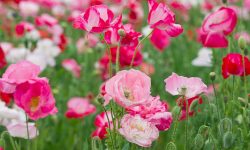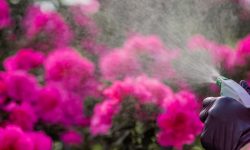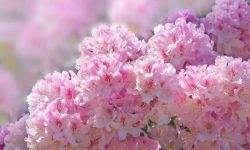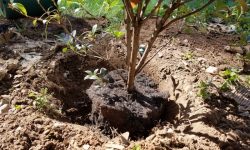Weigela is a popular flowering shrub known for its vibrant blooms and graceful form. Proper pruning is essential to maintain its health, encourage new growth, and ensure a spectacular flowering display each season. Knowing when to prune weigela can make the difference between a healthy shrub with abundant flowers and a sparse, leggy plant. Gardeners often struggle with timing and technique, which can inadvertently reduce blooms or stress the plant.
This guide provides expert tips on when to prune weigela for optimal results. You will learn about seasonal timing, pruning techniques for young and mature shrubs, rejuvenation methods for older plants, and common mistakes to avoid. By following these strategies, your weigela will thrive, producing lush foliage and colorful blossoms year after year. Understanding the plant’s growth cycle and adjusting care accordingly ensures both beauty and longevity, making your garden a vibrant, well-maintained landscape.
Understanding Weigela Growth and Flowering Patterns
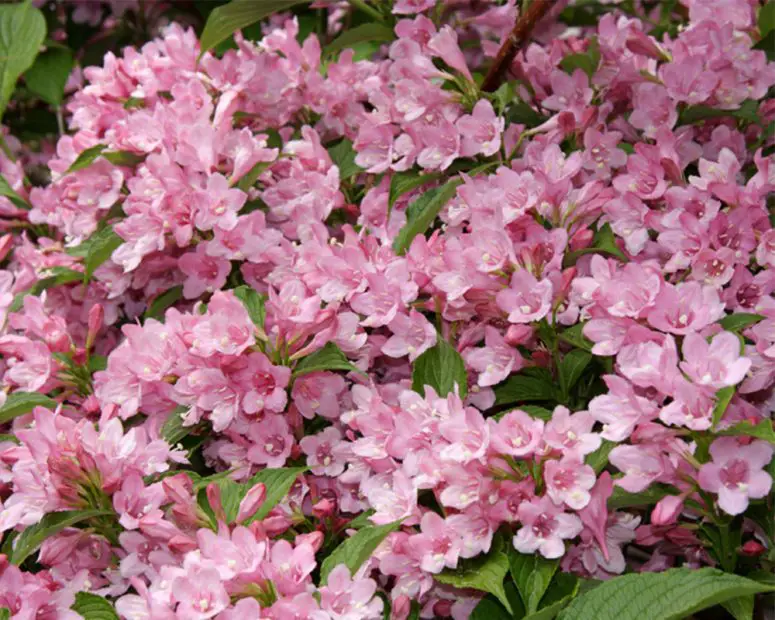
Weigela is a deciduous shrub that produces abundant, trumpet-shaped flowers in spring and early summer. Understanding its growth and flowering habits is essential for effective pruning. The plant typically blooms on old wood, meaning flower buds develop on stems from the previous year. This is why timing pruning incorrectly can reduce the number of blooms the following season. Observing the natural cycle helps gardeners plan cuts without compromising floral displays.
The shrub grows rapidly during the warm months, producing new shoots and branches. These new growths provide the structure for next year’s flowers. Young plants often require minimal pruning, primarily to establish a balanced framework. Mature plants may need more strategic trimming to remove overcrowded or older stems while preserving flowering branches. Recognizing which stems carry buds and which are just leafy growth ensures that pruning promotes both shape and flowering.
Environmental factors also influence growth and bloom patterns. Adequate sunlight, consistent watering, and nutrient-rich soil contribute to strong stems and abundant flowers. Shaded or poorly nourished plants produce fewer blooms and weaker wood. Gardeners should monitor these conditions to enhance growth naturally. By understanding weigela’s growth cycles and flowering patterns, pruning can be performed at the optimal time, resulting in healthier plants with vibrant, long-lasting blooms.
Signs Your Weigela Needs Pruning
Knowing when your weigela needs pruning starts with observing the plant carefully. One of the most obvious signs is overcrowded or tangled branches. Dense growth can block sunlight from reaching inner stems, reducing flower production. Overgrown shrubs also restrict airflow, creating a humid environment that encourages fungal diseases. Regular inspection helps you identify areas that need trimming before problems develop.
Another indicator is the presence of dead, damaged, or diseased branches. These stems not only look unattractive but also drain energy from healthy growth. Removing them promptly supports the plant’s overall health and allows it to focus on producing new shoots and blooms. Yellowing or weak stems can also signal the need for selective pruning.
Additionally, a lack of flowering may suggest it’s time to prune. Weigela blooms on old wood, so pruning at the wrong time or neglecting regular maintenance can reduce flower production. If the shrub appears leggy or sparse, strategic cuts can rejuvenate growth and stimulate new flowering wood. Recognizing these signs ensures timely pruning, leading to healthier, more vibrant shrubs with consistent blooms each season.
Best Time of Year to Prune Weigela
Timing is crucial when pruning weigela to ensure abundant blooms. Since this shrub flowers on old wood, the best time to prune is immediately after the main flowering period ends. For most varieties, this occurs in late spring to early summer. Pruning too early in the season can remove flower buds, reducing blooms for the year. Waiting until the plant finishes flowering allows you to shape it without compromising the display.
Pruning in late summer or fall is generally discouraged. Cuts made during this time may stimulate new growth that cannot harden before winter, leaving the plant vulnerable to cold damage. Additionally, flowering buds for the next year may be removed accidentally. Observing the bloom cycle and adjusting pruning accordingly ensures both healthy growth and consistent flowering.
Seasonal weather also influences pruning success. Avoid pruning during extreme heat or drought, as the shrub may become stressed and recover slowly. Moderate temperatures and consistent soil moisture promote faster healing. By understanding the ideal timing and environmental considerations, gardeners can prune weigela effectively, maintaining its shape, encouraging new growth, and ensuring vibrant flowers each year. Proper timing is the foundation of successful pruning and long-term plant health.
Pruning Techniques for Young and Mature Weigela
Pruning Young Weigela
Pruning young weigela shrubs focuses on shaping the plant and establishing a strong framework. Light pruning encourages healthy branching without stressing the plant. Remove weak, crossing, or damaged stems to allow better airflow and sunlight penetration. This promotes vigorous growth and sets the foundation for abundant flowering in future seasons. Shaping young plants early ensures a balanced, rounded structure that prevents overcrowding as the shrub matures.
Timing is important for young plants. Prune lightly immediately after the first flowering period to avoid removing buds prematurely. Focus on cutting back only the tips of stems or selectively thinning dense areas. Avoid heavy pruning at this stage, as it may reduce overall growth and slow flower production. Providing proper care, such as consistent watering and fertilization, enhances recovery and stimulates new shoots. With regular, gentle pruning, young weigela develops a strong, healthy framework that supports long-term beauty and vibrant blooms for years to come.
Pruning Mature Weigela
Mature weigela requires more strategic pruning to maintain shape, remove old wood, and encourage continuous flowering. Dense growth in older shrubs can block light and restrict airflow, increasing the risk of fungal disease. Focus on thinning interior branches while retaining healthy flowering stems. Removing dead or damaged wood helps the plant redirect energy toward new growth and floral production.
Pruning should be done after the main bloom, targeting overgrown or crowded branches. Avoid cutting too many stems at once, as drastic pruning can stress the shrub and reduce flowers for the next season. Gradual, selective trimming keeps the plant balanced and ensures strong stems for future blooms. By maintaining mature weigela with thoughtful pruning, gardeners can enjoy consistently vibrant flowers, compact growth, and a healthy, attractive shrub throughout the landscape.
Rejuvenation Pruning for Old Weigela Shrubs
Old weigela shrubs can become overgrown, woody, or produce fewer flowers each year. Rejuvenation pruning is a method to restore their vigor and encourage new growth. This process involves cutting back a significant portion of the plant, often removing one-third to one-half of the stems. By targeting old, weak, or overcrowded branches, the shrub can redirect energy to developing fresh shoots and flower buds for the following season.
The best time for rejuvenation pruning is immediately after the main flowering period. This timing allows the plant to recover fully before winter and ensures next year’s blooms are not sacrificed. Start by removing dead, diseased, or damaged branches, then trim the older, thicker stems near the base. Leave healthy shoots intact to maintain structure and support flowering.
After rejuvenation pruning, proper care is essential for successful recovery. Water the shrub consistently, keeping the soil moist but not waterlogged. Apply a balanced fertilizer to stimulate new growth and mulch around the base to retain moisture and regulate temperature. With patience and attentive care, an old weigela can transform into a lush, flowering shrub once again, providing vibrant blooms and renewed energy for many years in the garden.
Tools Needed for Safe and Effective Pruning
Using the right tools is essential for safe and effective weigela pruning. Sharp, clean tools make precise cuts, minimizing damage to the plant. Hand pruners are ideal for small stems, while loppers are better for thicker branches. For very old or woody shrubs, a pruning saw may be necessary. Selecting appropriate tools reduces stress on the plant and helps prevent disease.
Cleanliness is equally important. Dirty or contaminated tools can transfer pathogens from one plant to another, leading to infections. Always disinfect blades with rubbing alcohol or a diluted bleach solution before and after use. This precaution is particularly crucial when working with multiple shrubs in the garden.
Proper handling of tools ensures safety and efficiency. Use ergonomic pruners to reduce hand fatigue during extended pruning sessions. Make smooth, angled cuts to promote faster healing and avoid crushing stems. By investing in high-quality, well-maintained tools and following proper pruning techniques, gardeners can achieve optimal results. Healthy cuts, combined with regular maintenance, encourage vigorous growth, more flowers, and long-lasting beauty in weigela shrubs.
Encouraging New Growth After Pruning
Pruning stimulates new growth in weigela, but proper follow-up care ensures the plant thrives. After cutting back stems, the shrub redirects energy to developing fresh shoots and flower buds. Providing consistent moisture is essential during this period, as dry soil can stress the plant and slow recovery. Mulching around the base helps retain moisture and moderates soil temperature, creating ideal conditions for root and shoot development.
Fertilization also plays a key role in promoting new growth. Apply a balanced fertilizer rich in phosphorus and potassium to support strong stems and vibrant blooms. Avoid excessive nitrogen, which encourages leafy growth at the expense of flowers. Regular monitoring allows you to detect weak or damaged shoots and remove them promptly, helping the shrub focus on healthy growth.
Sunlight and proper spacing enhance new growth as well. Ensuring that light reaches interior branches encourages uniform development and reduces the risk of disease in crowded areas. Gradually shaping new shoots with selective trimming maintains structure while allowing energy to be channeled toward flowering. By combining careful watering, fertilization, and light management, your weigela will recover quickly, producing strong, healthy shoots and abundant blossoms in the next flowering season.
Seasonal Care Tips for Weigela
Spring Care for Weigela
Spring is a critical season for weigela, as the shrub prepares for active growth and flowering. Begin by inspecting the plant for winter damage, removing any broken or dead stems. Light pruning can shape the shrub and encourage strong new shoots. Applying a balanced, slow-release fertilizer in early spring promotes vigorous growth and abundant blooms.
Watering should be consistent but not excessive, keeping soil moist as new growth emerges. Mulching around the base helps retain moisture, suppresses weeds, and regulates soil temperature. Spring is also a good time to check for pests such as aphids, spider mites, or scale insects. Early intervention ensures healthy development and sets the stage for a vibrant flowering season.
Summer Care for Weigela
During summer, weigela focuses on flowering and establishing new growth. Deadheading faded blooms encourages further flowering and prevents energy from diverting to seed production. Consistent watering is important during hot, dry spells, especially for newly established shrubs. Ensure the soil drains well to avoid root rot while maintaining sufficient moisture.
Summer is also a prime time to monitor for pests and diseases. Regular inspections and prompt treatment help prevent infestations from spreading. Maintaining good air circulation by thinning dense growth reduces fungal issues. By paying attention to watering, fertilization, and pest management, gardeners can support peak blooming and healthy foliage throughout the summer months.
Fall and Winter Care for Weigela
In fall, weigela begins preparing for dormancy. Gradually reduce watering to avoid encouraging tender new growth that could be damaged by frost. Apply mulch to protect roots from fluctuating temperatures and retain soil moisture during colder months. Light pruning may be done after flowering to maintain shape, but avoid heavy cuts that stimulate late growth.
Winter care focuses on protection. In regions with harsh cold, consider wrapping young or sensitive shrubs with breathable fabric. Regularly monitor for signs of winter damage and remove any broken stems in late winter or early spring. Proper seasonal care ensures that weigela emerges healthy and vigorous each year, ready to produce abundant blooms and maintain structural integrity.
Common Mistakes to Avoid When Pruning Weigela
Pruning at the Wrong Time
One of the most common mistakes when pruning weigela is cutting at the wrong time. Pruning too early in the spring can remove developing flower buds, significantly reducing blooms for the season. Conversely, pruning too late in the summer or fall may stimulate new growth that cannot harden before winter. This leaves the shrub vulnerable to cold damage and reduces overall plant vigor.
The ideal timing is immediately after the main flowering period. This allows the shrub to maintain its natural flowering cycle while recovering in time for the next season. Gardeners should observe the bloom cycle carefully to determine when the flowers have faded and the shrub is ready for trimming. Avoid rushing or delaying, as both can compromise the health and aesthetic appeal of the plant. Proper timing ensures maximum flowering and long-term shrub vitality, keeping your weigela lush and vibrant year after year.
Cutting Too Much or Too Little
Another frequent error is improper pruning intensity. Removing too many branches at once can shock the shrub, reduce flowering, and slow recovery. On the other hand, cutting too little may leave overcrowded or leggy growth that diminishes airflow and light penetration, increasing disease risk.
A safe practice is to remove only one-third of the older stems and selectively trim crowded areas. Focus on dead, damaged, or crossing branches while leaving healthy flowering stems intact. Gradual pruning over multiple sessions can help shape the shrub without stressing it. By balancing the amount of growth removed, gardeners maintain a healthy structure, encourage strong new shoots, and ensure consistent, vibrant blooms each year.
Using Dull or Dirty Tools
Many gardeners underestimate the importance of clean, sharp tools when pruning weigela. Dull pruners crush stems, causing jagged cuts that take longer to heal and increase the risk of disease. Dirty or contaminated tools can transfer pathogens from other plants, spreading fungal or bacterial infections. These mistakes can weaken the shrub, reduce flowering, and create long-term health problems.
To avoid issues, always sterilize tools before and after use with rubbing alcohol or a diluted bleach solution. Ensure blades are sharp and in good condition, which allows smooth, precise cuts that heal quickly. Ergonomic pruners reduce hand fatigue, making it easier to maintain proper technique during extended sessions. By using clean, sharp, and well-maintained tools, gardeners minimize plant stress, prevent disease spread, and promote healthy growth. Proper tool care is a simple yet essential step in successful pruning, ensuring your weigela remains vibrant and full of flowers year after year.
Neglecting Post-Pruning Care
Failing to care for weigela after pruning is another common error. Once stems are trimmed, the shrub redirects energy to new growth and flower bud formation. Without proper watering, fertilization, and protection, the plant can experience stress, slow recovery, or reduced blooms. Environmental extremes, such as intense sun or cold, can exacerbate damage if the plant is not monitored carefully.
To support recovery, water consistently while avoiding overwatering, apply a balanced fertilizer to encourage strong shoots, and mulch around the base to retain moisture. Regularly inspect the shrub for pests or diseases, especially near fresh cuts, and remove any damaged stems promptly. Providing attentive post-pruning care ensures vigorous new growth, stronger flowering stems, and overall plant health. By combining proper trimming with careful follow-up care, gardeners help weigela thrive and produce vibrant blooms season after season.
Designing with Weigela in Different Garden Styles
Weigela is a versatile shrub that complements many garden styles, from formal landscapes to naturalistic designs. In structured gardens, its compact growth and vibrant blooms can create striking borders or hedges. Planting weigela along walkways or around patios adds color and fragrance, enhancing the overall aesthetic. Combining it with other flowering shrubs, such as hydrangeas or azaleas, provides layered textures and continuous seasonal interest.
In cottage or informal gardens, weigela’s natural arching branches and abundant flowers create a relaxed, romantic feel. Allowing the stems to cascade slightly while maintaining selective pruning encourages a soft, flowing appearance. Pairing it with perennials like coneflowers, daylilies, or ornamental grasses adds variety in height and color. These combinations highlight the shrub’s floral display while blending harmoniously with other garden elements.
Weigela can also be used effectively in mixed shrub borders or pollinator-friendly gardens. Its tubular flowers attract hummingbirds and bees, supporting local biodiversity. Consider planting near paths or seating areas to enjoy both visual and sensory appeal. Thoughtful placement, combined with seasonal pruning and proper care, ensures that weigela contributes both beauty and ecological value. With versatile styling options, gardeners can integrate this shrub into nearly any garden design for vibrant blooms and lasting charm.
Companion Planting Ideas with Weigela
Weigela pairs well with a variety of plants that share similar light and soil requirements. Planting alongside flowering perennials, such as daylilies, hostas, or astilbes, enhances visual appeal while providing continuous color throughout the growing season. The combination of foliage textures and complementary bloom colors creates a dynamic, layered garden effect.
Shrubs like hydrangeas or spireas also make excellent companions. Their differing bloom times extend the visual interest and help maintain a full garden display from spring through summer. Choosing plants that do not compete aggressively for nutrients ensures that each shrub, including weigela, grows healthy and vibrant. Strategic placement promotes air circulation, reducing disease risk and encouraging strong growth.
Weigela is also valuable in wildlife-friendly gardens. Its tubular flowers attract hummingbirds and pollinators, which benefit nearby companion plants. Incorporating low-growing groundcovers or ornamental grasses can further enhance the design, providing both texture and coverage at the base. By thoughtfully selecting companions, gardeners can create harmonious landscapes that maximize the beauty and ecological value of weigela shrubs. Proper care, including pruning and fertilization, ensures all plants thrive together, producing a colorful, healthy, and resilient garden.
Common Pests and Disease Management for Weigela
Identifying Common Pests
Weigela shrubs can be affected by various pests, with aphids, spider mites, and scale insects being the most frequent. Aphids cluster on new growth, sucking sap and causing leaves to curl, yellow, or drop prematurely. Spider mites are tiny and often go unnoticed until leaf stippling or fine webbing appears. Scale insects attach to stems and leaves, appearing as small bumps that weaken the shrub over time.
Early detection is critical for maintaining plant health. Regular inspections should include checking the undersides of leaves and the stems, especially during warm, dry weather when pests are most active. Small infestations can often be controlled by spraying the shrub with a strong stream of water to dislodge insects. For persistent issues, using insecticidal soap or horticultural oils is effective without harming beneficial insects. Introducing natural predators like ladybugs or lacewings can also help maintain a balanced ecosystem. Observing the shrub closely and responding quickly ensures that pests do not compromise growth or flowering, keeping weigela strong, healthy, and visually appealing.
Preventive Measures
Preventing pest problems begins with proper cultural practices. Spacing weigela shrubs appropriately improves airflow, reducing humidity around foliage and discouraging insect infestations. Maintaining healthy soil with adequate organic matter and regular watering supports vigorous growth, making plants less attractive to pests. Over-fertilizing with nitrogen should be avoided, as excessively lush growth can attract aphids and other insects.
Garden hygiene also plays a significant role. Removing fallen leaves, pruned branches, and plant debris prevents pests from overwintering and reduces potential breeding sites. Applying a layer of mulch around the base helps retain moisture and moderates soil temperature, promoting root health. Companion planting with flowering perennials or herbs that repel insects can further reduce pest pressure. By combining proper spacing, soil care, mulch application, and strategic companion planting, gardeners can minimize pest problems naturally. Preventive measures not only protect the shrub but also support a balanced garden ecosystem, ensuring weigela remains vigorous, disease-resistant, and full of vibrant blooms throughout the growing season.
Controlling Diseases
Weigela is susceptible to fungal infections such as powdery mildew, leaf spot, and root rot, especially in conditions of poor drainage, excessive moisture, or overcrowding. Powdery mildew appears as a white, powdery coating on leaves, while leaf spot causes brown or black patches that can spread rapidly. Root rot typically develops when soil remains soggy for prolonged periods, leading to wilting and overall decline in plant vigor.
Effective control begins with proper cultural practices. Ensure good air circulation by spacing plants appropriately and pruning dense branches. Avoid overhead watering, which keeps foliage wet and encourages fungal growth. Remove and dispose of infected leaves promptly to prevent the spread of pathogens. For persistent fungal problems, applying fungicides may be necessary. Organic treatments such as neem oil, sulfur sprays, or baking soda solutions can control fungal infections without harming beneficial insects. Monitoring the plant regularly allows early detection, which is crucial for minimizing damage. Combining preventive care with timely treatment ensures that weigela remains healthy, supports strong flowering, and maintains its ornamental appeal year after year. Consistent vigilance is key to long-term disease management.
FAQ About When to Prune Weigela
What is the best time of year to prune weigela?
The ideal time to prune weigela is immediately after it finishes flowering in late spring or early summer. Pruning too early in spring can remove flower buds, reducing blooms for the season. Pruning in late summer or fall can stimulate new growth that may be damaged by winter cold.
How much should I cut back my weigela during pruning?
It’s important not to remove more than one-third of the plant at a time. Over-pruning can stress the shrub, reduce photosynthesis, and slow recovery. Focus on cutting dead, damaged, or overcrowded branches while leaving healthy stems intact to encourage strong growth and abundant flowering.
Can I rejuvenate an old weigela plant?
Yes, rejuvenation pruning can restore older weigela shrubs. Remove up to one-third of the oldest stems at the base to stimulate new growth. This method encourages fresh, vigorous shoots that produce more flowers and maintain the plant’s overall health and aesthetic shape.
How do I prevent diseases after pruning?
After pruning, ensure tools are clean and sterilized to prevent the spread of pathogens. Remove debris from around the plant, maintain proper spacing for airflow, and avoid wetting foliage excessively. Monitoring for fungal infections and applying organic fungicides if needed helps protect the shrub.
How can I encourage more blooms on my weigela?
Deadhead faded flowers immediately after blooming to redirect energy to new bud formation. Provide balanced fertilization with moderate nitrogen and adequate phosphorus. Ensure full sun exposure, proper watering, and regular pruning to maintain strong stems, healthy foliage, and consistent flowering each season.
Conclusion
Proper pruning is essential for maintaining healthy, vibrant weigela shrubs year after year. By understanding the right timing, avoiding common mistakes, and providing post-pruning care, gardeners can ensure abundant blooms and strong growth. Combining seasonal pruning, rejuvenation techniques, and preventive measures for pests and diseases creates resilient, long-lasting plants. Thoughtful pruning also enhances the shrub’s natural shape and complements the garden’s overall aesthetic. With consistent attention and proper care, your weigela will reward you with a spectacular display of color and vitality every growing season, making it a standout feature in any landscape.

